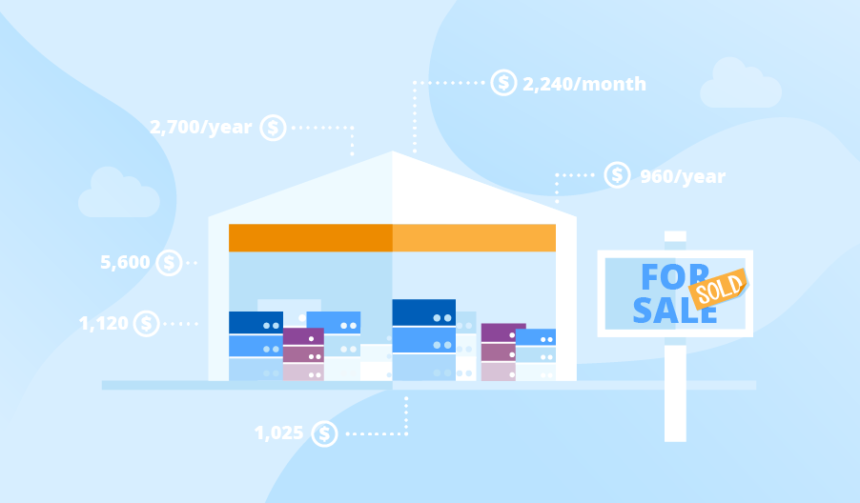In the rapidly evolving world of data analytics, the need for robust and scalable data warehouses has never been more critical. These repositories not only support vast amounts of data but also enable complex analytical computations without the operational overhead of traditional solutions.
Understanding Data Warehouse Pricing Models
Storage Costs
At the core of data warehouse cost structures, including those similar to Snowflake pricing, lies the cost of storage. This is usually calculated based on the amount of data stored, often in gigabytes or terabytes. Effective storage cost structures similar to those used in Snowflake pricing should:
- Reflect usage: Only charge for the actual space used, considering automatic data compression.
- Scale economically: As data volume grows, per-unit storage costs should decrease to support scalability without a drastic increase in expense.
Compute Costs
Compute costs are typically associated with the processing power required to execute queries and perform data analysis. This is often where the flexibility of a data warehouse becomes evident:
- On-demand compute resources: Allowing users to scale processing power up or down as needed helps manage costs effectively. This is ideal for handling varying workloads without maintaining unnecessary resources.
- Pay-per-use model: Charges are based on the time and power used for queries. This model prevents overpaying for idle resources and can significantly reduce operational costs.
Service and Maintenance Costs
Beyond storage and compute, additional costs come from services like data transfer, backups, and automated management features. These are often overlooked but can impact overall pricing:
- Data transfer fees: Involves costs for moving data in and out of the warehouse. Opt for services with lower or no exit fees to minimize these expenses.
- Automatic scaling and backups: Services that offer automated scaling and regular backups provide greater reliability and can prevent costly downtime and data loss.
Key Strategies to Optimize Data Warehouse Costs
Several strategies can be implemented to manage data warehouse costs effectively.
Right-Sizing Resources
One of the most effective cost-saving measures is right-sizing the compute resources based on actual needs. This involves:
- Analyzing usage patterns: Monitor and analyze workloads to identify peak and off-peak periods. Adjust resources accordingly to avoid over-provisioning.
- Choosing the right size and warehouse type: Select configurations that best match your workload requirements. Smaller, more numerous warehouses can sometimes offer better performance at a lower cost than larger, underutilized ones.
Efficient Data Management
Efficient data management is pivotal in reducing unnecessary costs:
- Data pruning and archiving: Regularly remove outdated or irrelevant data and archive less frequently accessed data to cheaper storage solutions.
- Optimize data formats and compression: Use optimized data formats and compression techniques to reduce the physical storage footprint, thereby lowering costs.
Utilize Spot and Preemptible Instances
For non-critical workloads, using spot or preemptible instances can lead to substantial savings:
- Leverage spot instances: These are available at a fraction of the cost of regular instances and are ideal for batch processing jobs that can tolerate interruptions.
- Preemptible options: Similar to spot instances, these are cheaper but can be stopped by the provider. They are suitable for tasks with flexible start and end times.
Implement Caching and Materialized Views
Caching frequently accessed data and using materialized views can significantly improve query performance and reduce computational overhead:
- Caching: Store commonly accessed data in memory to reduce the number of expensive disk reads and writes.
- Materialized views: Pre-compute and store complex queries as static data to minimize re-computation and speed up frequently run queries.
Cost Transparency and Predictability
To manage and predict data warehouse costs effectively, businesses need comprehensive visibility into their usage and expenditures.
Monitoring and Alerts
Set up monitoring tools to track resource usage and costs. Use alerts to notify when spending exceeds predefined thresholds, which can help prevent budget overruns.
Predictive Cost Analysis
Use historical data to predict future costs. This helps in budgeting and identifying potential savings by adjusting resource allocations in advance.
Businesses can achieve a robust data analytics infrastructure without breaking the bank by understanding the pricing models, implementing strategic resource management, and using advanced features like caching and spot instances. With these strategies, companies can turn their data warehousing solutions into cost-effective yet powerful tools that drive informed decision-making and sustainable growth.






